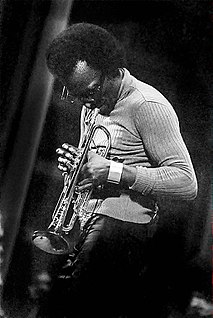
Cold fusion is a hypothesized type of nuclear reaction that would occur at, or near, room temperature. It would contrast starkly with the "hot" fusion that is known to take place naturally within stars and artificially in hydrogen bombs and prototype fusion reactors under immense pressure and at temperatures of millions of degrees, and distinguished from muon-catalyzed fusion. There is currently no accepted theoretical model that would allow cold fusion to occur.

In nuclear chemistry, nuclear fusion is a reaction in which two or more atomic nuclei are combined to form one or more different atomic nuclei and subatomic particles. The difference in mass between the reactants and products is manifested as either the release or absorption of energy. This difference in mass arises due to the difference in atomic "binding energy" between the atomic nuclei before and after the reaction. Fusion is the process that powers active or "main sequence" stars, or other high magnitude stars.

Fusion power is a theoretical form of power generation in which energy will be generated by using nuclear fusion reactions to produce heat for electricity generation. In a fusion process, two lighter atomic nuclei combine to form a heavier nucleus, and at the same time, they release energy. This is the same process that powers stars like our Sun. Devices designed to harness this energy are known as fusion reactors.

Jazz fusion is a musical genre that developed in the late 1960s when musicians combined jazz harmony and improvisation with rock music, funk, and rhythm and blues. Electric guitars, amplifiers, and keyboards that were popular in rock and roll started to be used by jazz musicians, particularly those who had grown up listening to rock and roll.
Adobe ColdFusion is a commercial rapid web application development platform created by J. J. Allaire in 1995. ColdFusion was originally designed to make it easier to connect simple HTML pages to a database. By version 2 (1996), it became a full platform that included an IDE in addition to a full scripting language.

SanDisk is a brand of Western Digital that produces flash memory products, including memory cards and readers, USB flash drives, and solid state drives. As of February 2015, SanDisk is the third-largest manufacturer of flash memory.

A vergence is the simultaneous movement of both eyes in opposite directions to obtain or maintain single binocular vision.
Convergence insufficiency or convergence disorder is a sensory and neuromuscular anomaly of the binocular vision system, characterized by a reduced ability of the eyes to turn towards each other, or sustain convergence.
Heterophoria is an eye condition in which the directions that the eyes are pointing at rest position, when not performing binocular fusion, are not the same as each other, or, "not straight". This condition can be esophoria, where the eyes tend to cross inward in the absence of fusion; exophoria, in which they diverge; or hyperphoria, in which one eye points up or down relative to the other. Phorias are known as 'latent squint' because the tendency of the eyes to deviate is kept latent by fusion. A person with two normal eyes has single vision (usually) because of the combined use of the sensory and motor systems. The motor system acts to point both eyes at the target of interest; any offset is detected visually. Heterophoria only occurs during dissociation of the left eye and right eye, when fusion of the eyes is absent. If you cover one eye you remove the sensory information about the eye's position in the orbit. Without this, there is no stimulus to binocular fusion, and the eye will move to a position of "rest". The difference between this position, and where it would be were the eye uncovered, is the heterophoria. The opposite of heterophoria, where the eyes are straight when relaxed and not fusing, is called orthophoria.
Web3D was initially the idea to fully display and navigate Web sites using 3D. By extension, the term now refers to all interactive 3D content which are embedded into web pages' HTML, and that users can see through a web browser.

The Verge is an American technology news and media network operated by Vox Media. The network publishes news items, long-form feature stories, guidebooks, product reviews, and podcasts.

Androidland is the first Android retail store, opened by the carrier Telstra on Bourke Street, Melbourne, Australia, in December 2011. If it proves successful, it may expand within the country and internationally.

Google Docs is a word processor included as part of a free, web-based software office suite offered by Google within its Google Drive service. This service also includes Google Sheets and Google Slides, a spreadsheet and presentation program respectively. Google Docs is available as a web application, mobile app for Android, iOS, Windows, BlackBerry, and as a desktop application on Google's ChromeOS. The app is compatible with Microsoft Office file formats. The application allows users to create and edit files online while collaborating with other users in real-time. Edits are tracked by user with a revision history presenting changes. An editor's position is highlighted with an editor-specific color and cursor. A permissions system regulates what users can do. Updates have introduced features using machine learning, including "Explore", offering search results based on the contents of a document, and "Action items", allowing users to assign tasks to other users.

The prism fusion range (PFR) or fusional vergence amplitude is a clinical eye test performed by orthoptists, optometrists, and ophthalmologists to assess motor fusion, specifically the extent to which a patient can maintain binocular single vision (BSV) in the presence of increasing vergence demands. Motor fusion is largely accounted to amplitudes of fusional vergences and relative fusional vergences. Fusional vergence is the maximum vergence movement enabling BSV and the limit is at the point of diplopia. Relative fusional vergence is the maximum vergence movement enabling a patient to see a comfortable clear image and the limit is represented by the first point of blur. These motor fusion functions should fall within average values so that BSV can be comfortably achieved. Excessive stress on the vergence system or inability to converge or diverge adequately can lead to asthenopic symptoms, which generally result from decompensation of latent deviations (heterophoria) or loss of control of ocular misalignments. Motor anomalies can be managed in various ways, however, in order to commence treatment, motor fusion testing such as the PFR is required.

Dynasty is a live album by saxophonist Stan Getz recorded in London and originally released on the Verve label in 1971 as a double album.

iPhone 7 and iPhone 7 Plus are smartphones designed, developed, and marketed by Apple Inc. It is the tenth generation of the iPhone. They were announced on September 7, 2016, at the Bill Graham Civic Auditorium in San Francisco by Apple CEO Tim Cook, and were released on September 16, 2016, succeeding the iPhone 6S and iPhone 6S Plus as the flagship devices in the iPhone series. Apple also released the iPhone 7 and 7 Plus in numerous countries worldwide throughout September and October 2016. They were succeeded as flagship devices by the iPhone 8 and iPhone 8 Plus on September 22, 2017, and the iPhone X on November 3, 2017.

The iPad is a 9.7-inch (25cm) tablet computer designed, developed, and marketed by Apple Inc. It was announced on March 27, 2018, during an education-focused event at Lane Tech High School in Chicago and is the successor to the 2017 model, upgraded with the Apple A10 Fusion SoC and support for styluses such as Apple Pencil. The iPad is marketed towards educators and schools.















